EAPS Displays on the second floor of the HAMP building
Second Floor
What’s there?
The Gold Mine Display
This is an interactive display about the mining process. Photos are from the Gold Resource Corporation’s Oaxaca Mine. Four interactive touch screen displays, sliders, a core, and wall photos.
Check out the 360 photo of the Gold mine below!
Move the photo around too see other parts of the display.
Geologic Time Scale
This depicts the major geologic intervals and events in the inner Solar System. For example, it explains how the Moon had a Copernican Period, an Eratosthenian Period, an Imbrian Period, and a Nectarian Period. It also goes on to explain the major geologic intervals and events of mercury, Venus, Earth, and Mars.
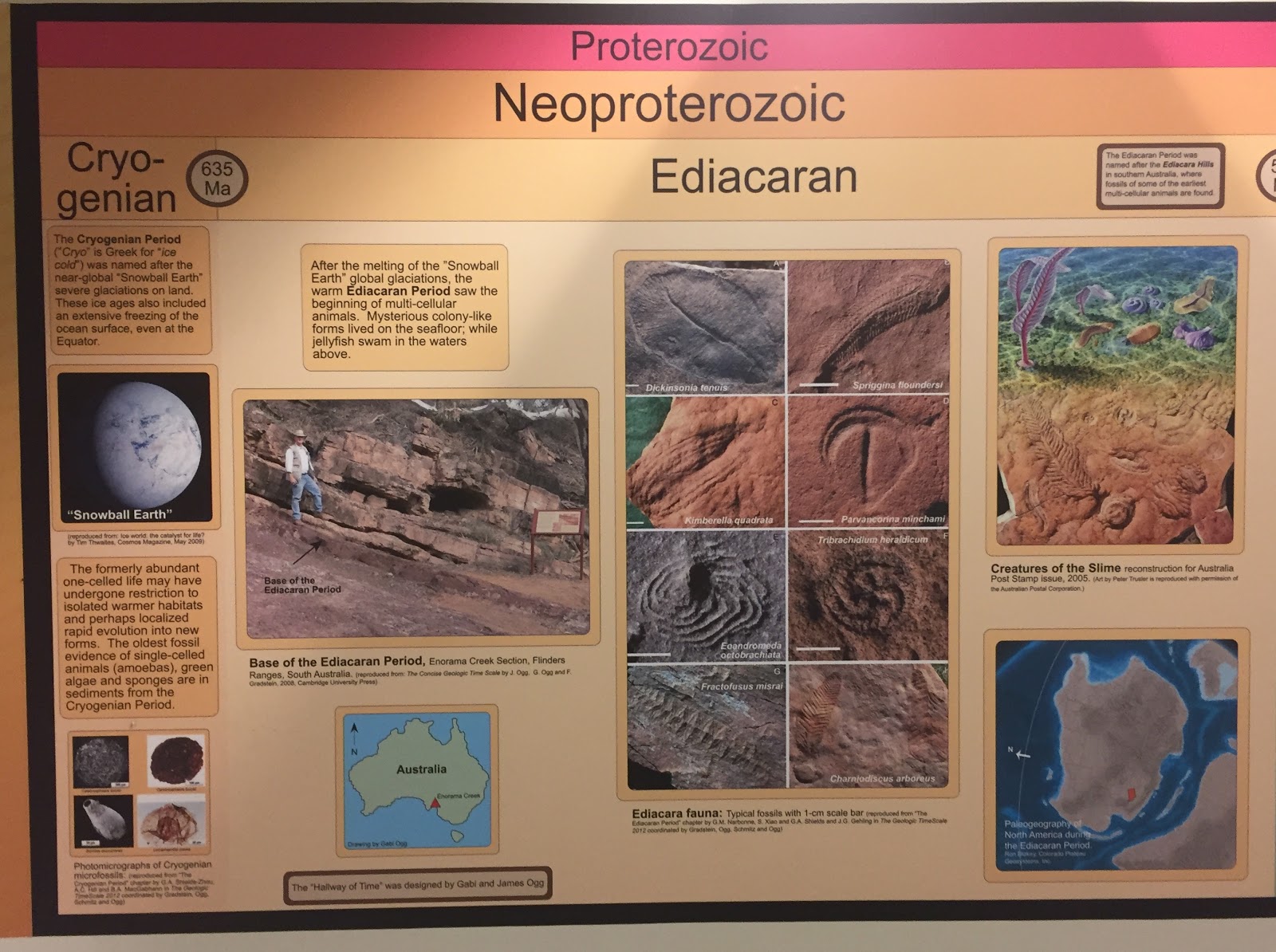
This is part of Earth’s timeline. It breaks it down from the Proterozoic Eon into the smaller Neoproterozoic Era, which is then in turn divided into the Cryogenian Period and the Ediacaran Period. The Cryogenian Period is dubbed the “Snowball Earth” due to the severe glaciations that took place. The Ediacaran Period started after the melting of this “Snowball Earth”. Multi-cellular animals also started during this period.
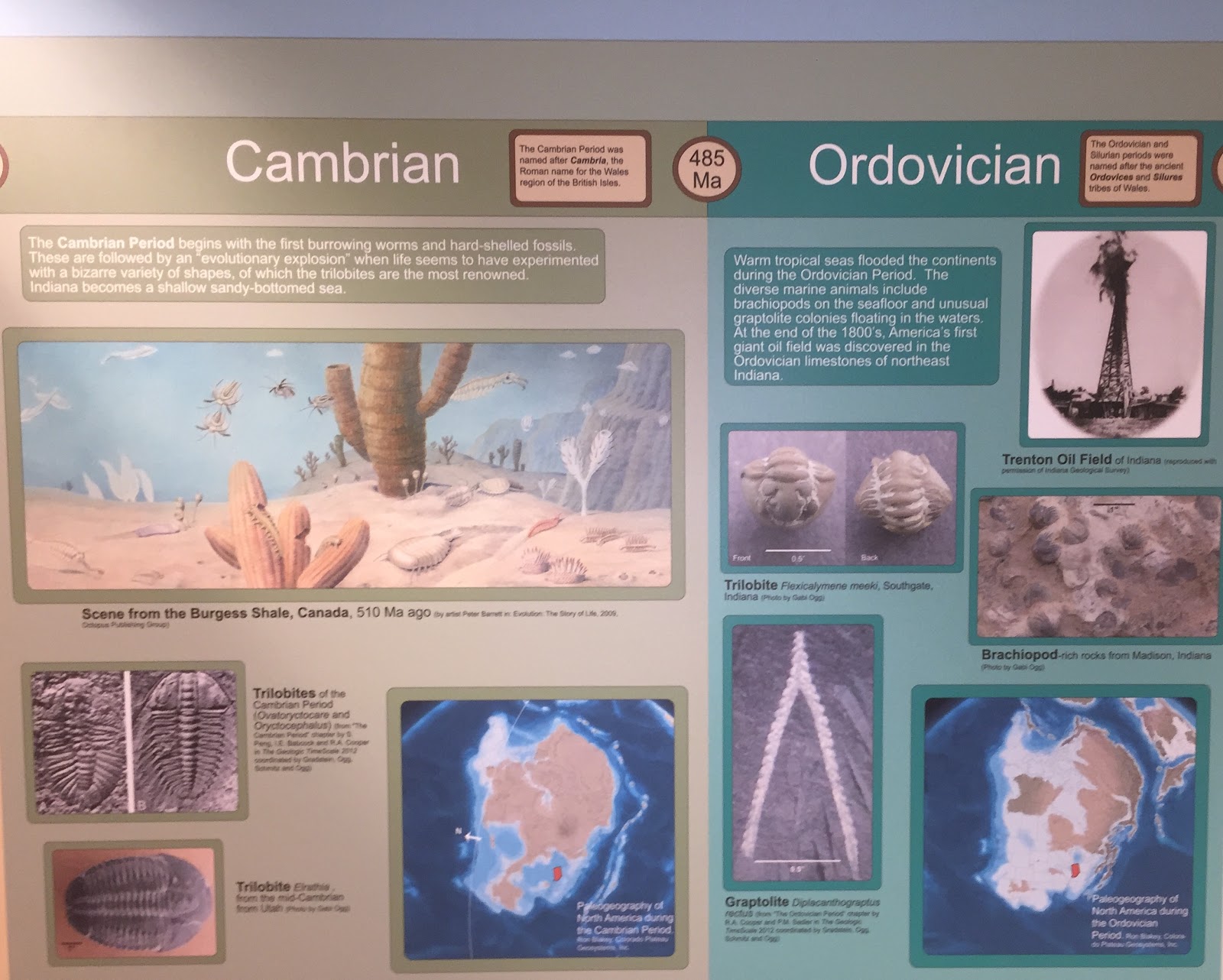
This breaks down the Phanerozoic Eon into the Paleozoic Era, which is then subdivided, in this photo, into the Cambrian Period and the Ordovician Period. The Cambrian Period starts with the firs burrowing worms and hard-shelled fossils, and then there was an “evolutionary explosion”. The Ordovician Period is when warm tropical seas flooded the continents, and there were many diverse marine animals.
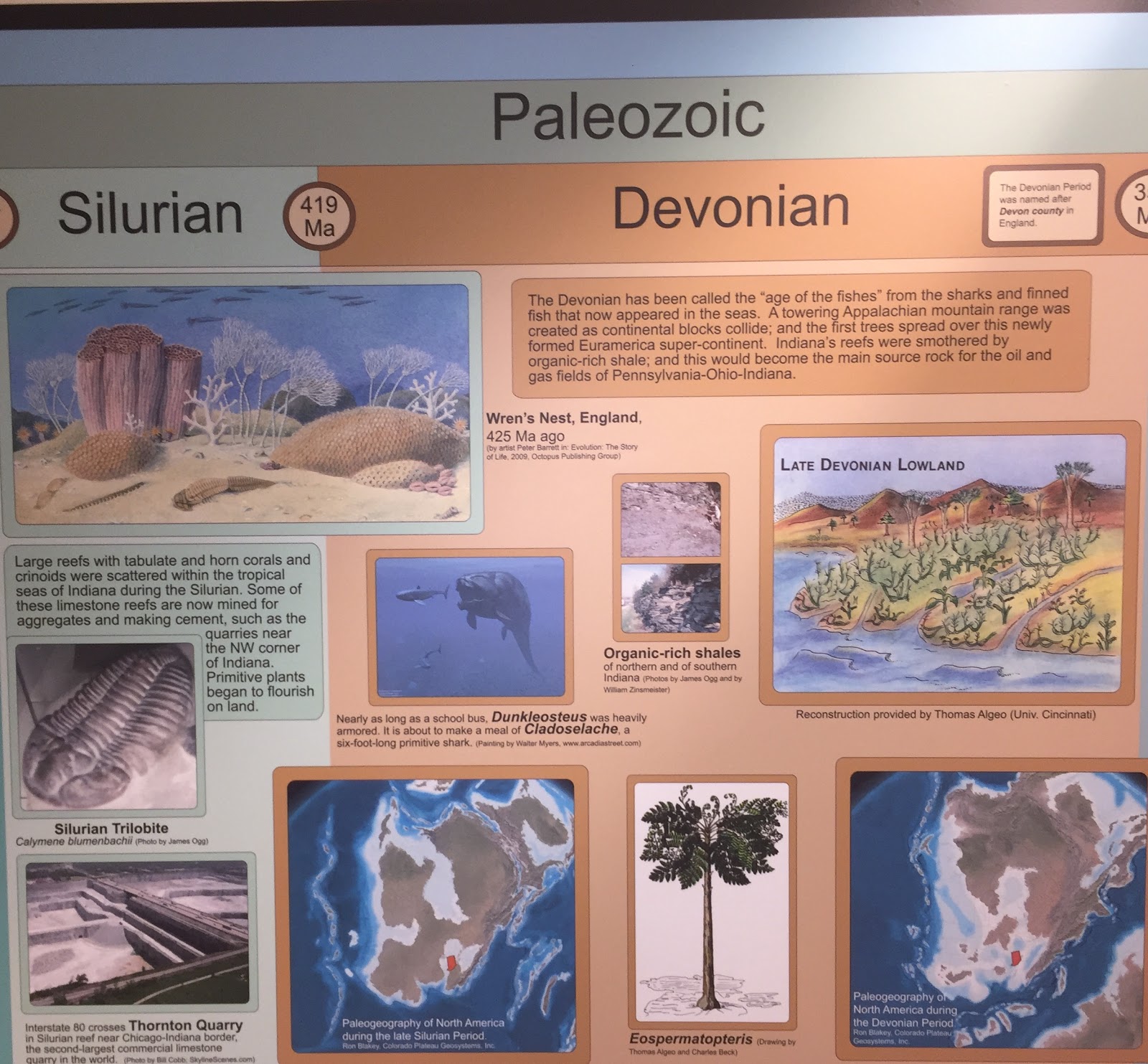
This is breaking down the Phanerozoic Eon into the Paleozoic Era, which is then subdivided, in this photo, into the Silurian Period and Devonian Period. The Silurian Period had large reefs with tabulate and horn corals. The Devonian Period is dubbed the “age of fishes” because this is the time in which sharks and finned fish appeared.
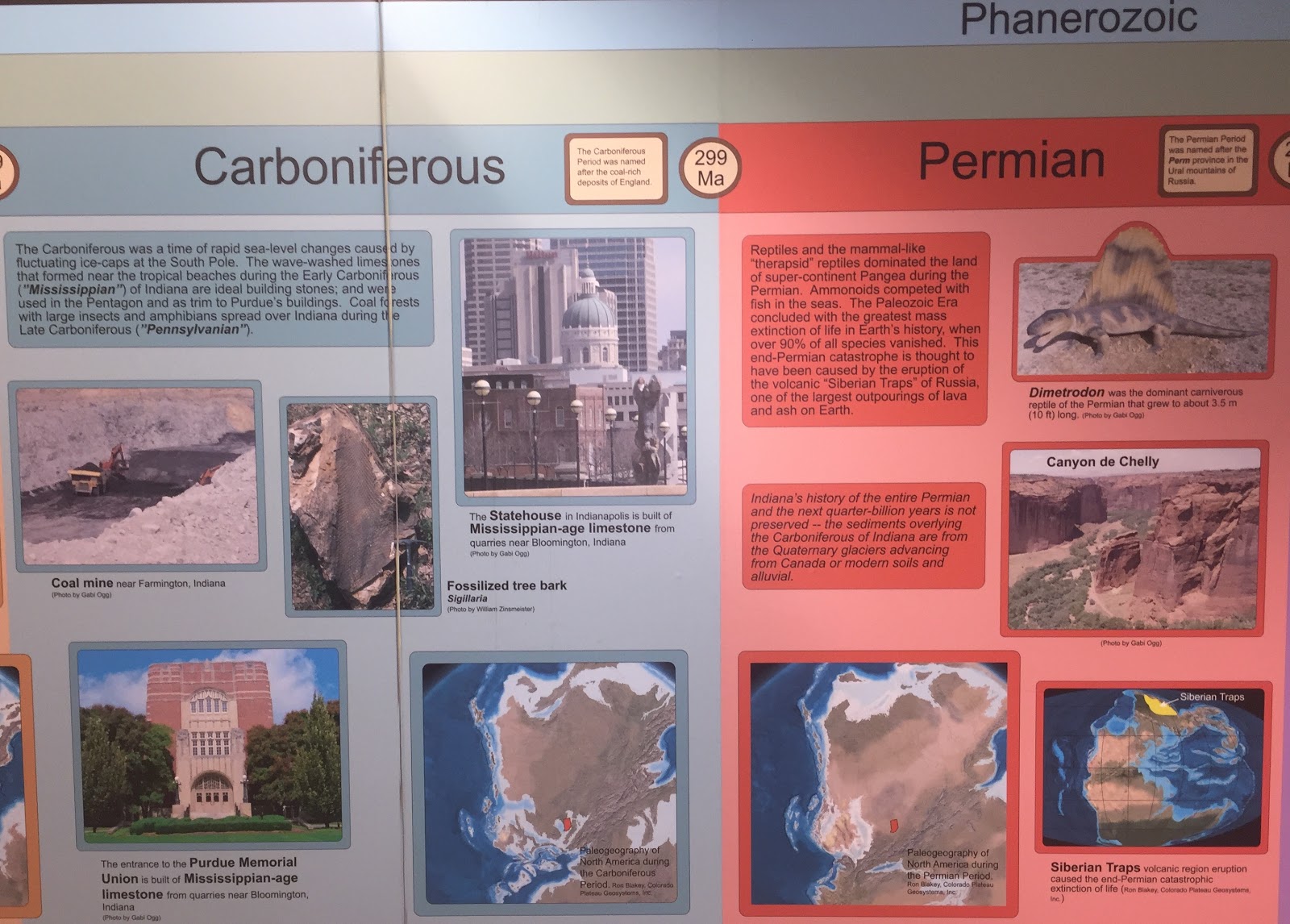
This breaks down the Phanerozoic Eon into the Paleozoic Era, which is then divided into, in this photo, the Carboniferous Period, and the Permian Period. The Carboniferous Period was a time of rapid sea-level changes because of changing ice-caps at the South Pole. The Permian Period is when reptiles and therapsid reptiles dominated the land on Pangea. The end of the Paleozoic Era comes to an end, though, at the end of the Permian Period when there is the largest mass extinction of life in Earth’s history.
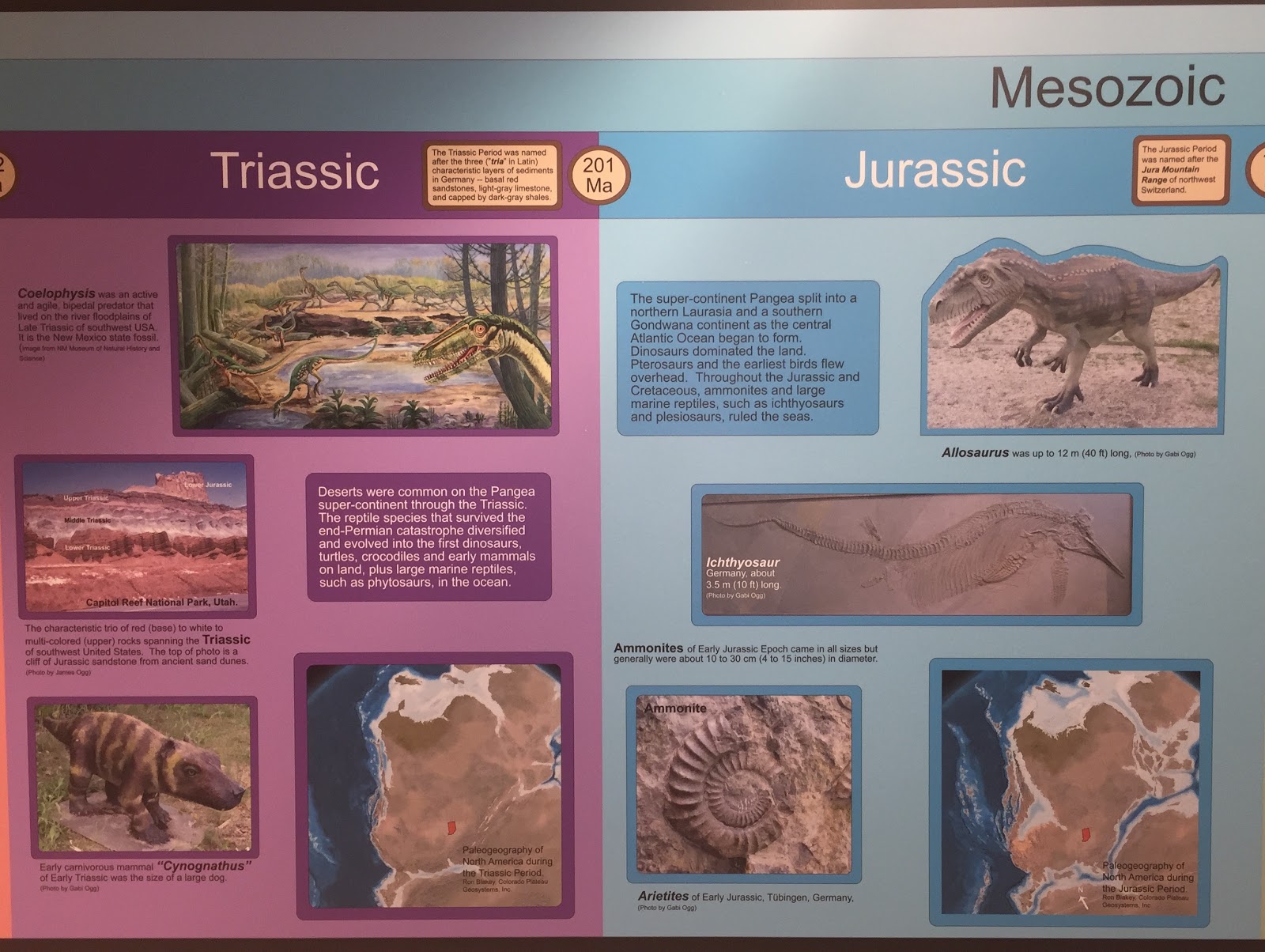
This breaks down the Phanerozoic Eon into the Mesozoic Era, which is then divided, in this picture, into the Triassic Period and the Jurassic Period. The Triassic Period had many deserts, and the first dinosaurs, turtles, early mammals, and crocodiles emerged. The Jurassic Period is when Pangea split, and dinosaurs ruled the earth.
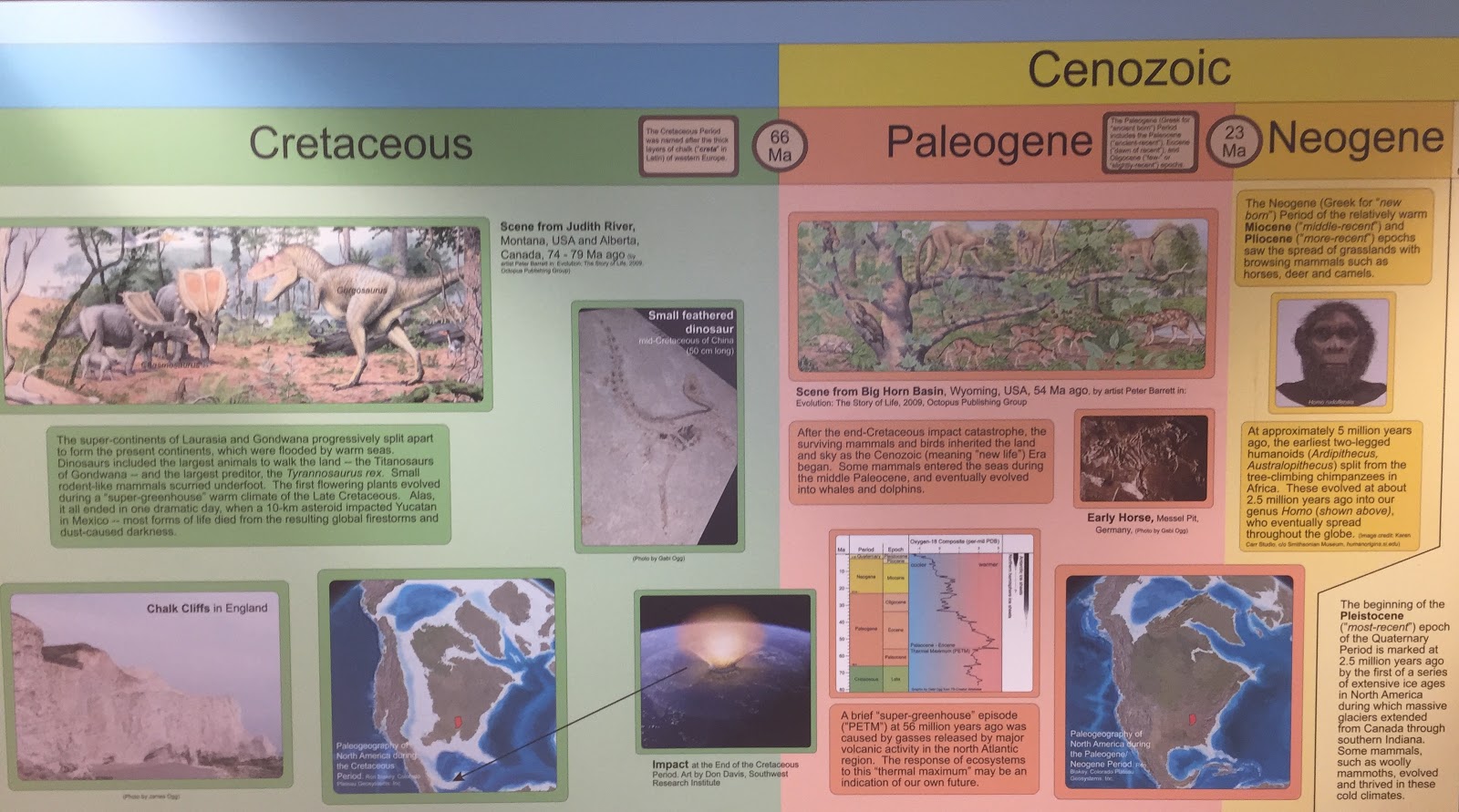
This breaks down the Phanerozoic Eon into both the Mesozoic Era and the Cenozoic Era. The Mesozoic Era is further divided into the Cretaceous Period, while the Cenozoic Era is split between the Paleogene Period and the Neogene Period. The Cretaceous Period is when the land masses split into the current continents. This period also ends with an asteroid hitting what is now Mexico, killing most forms of life. The Paleogene Period is defined by the post-asteroid surviving mammals and birds dominating the globe. The Neogene Period is subdivided even further into the Miocene and Pliocene epochs.
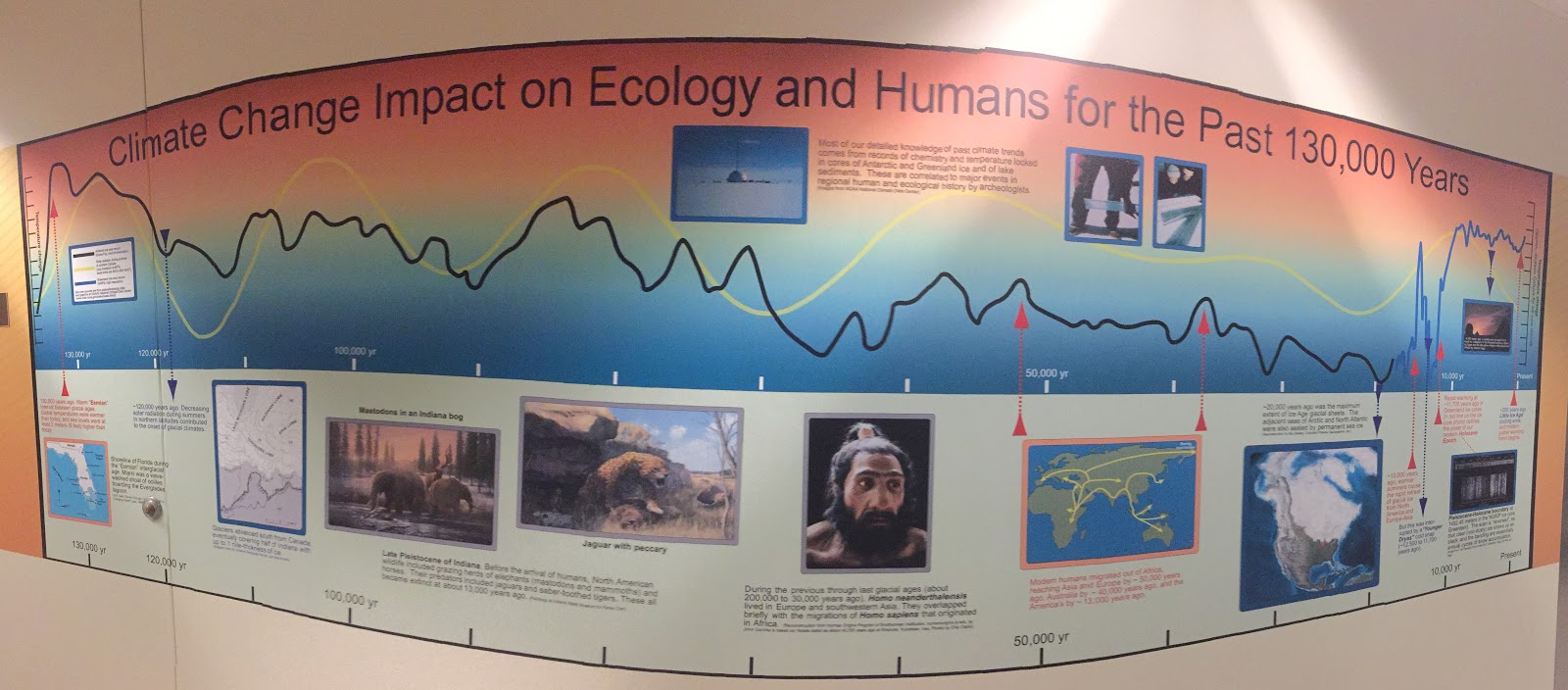
As the title suggests, this depicts climate change’s impact on ecology and humans for the past 130,000 years. The black line is the antarctic ice core record, the yellow is solar radiation during summer in Canada, and the blue is the Greenland ice-core record.
Rocks and Minerals
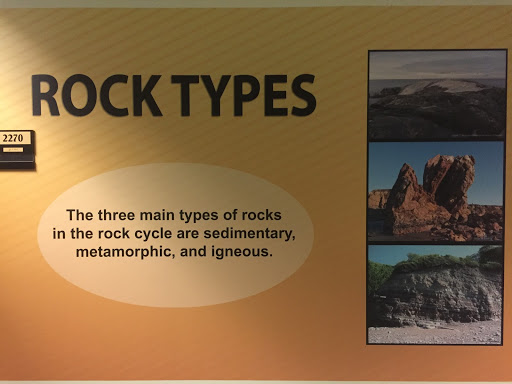
This is a photo depicting the three types of rocks found in the rock cycle: igneous, sedimentary, and metamorphic.
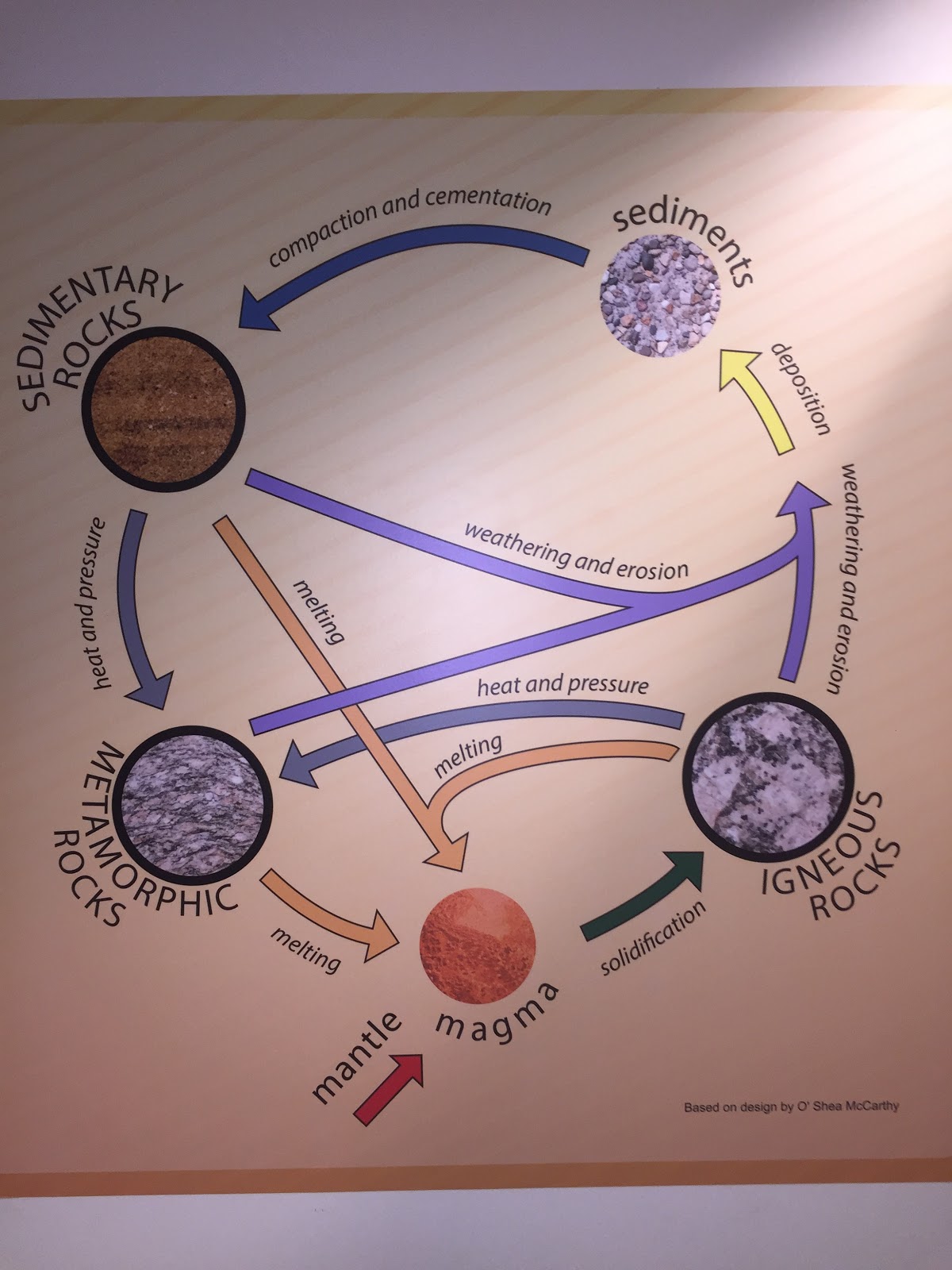
This is showing the many steps and necessary factors needed for the rock cycle to continue on as it has been.
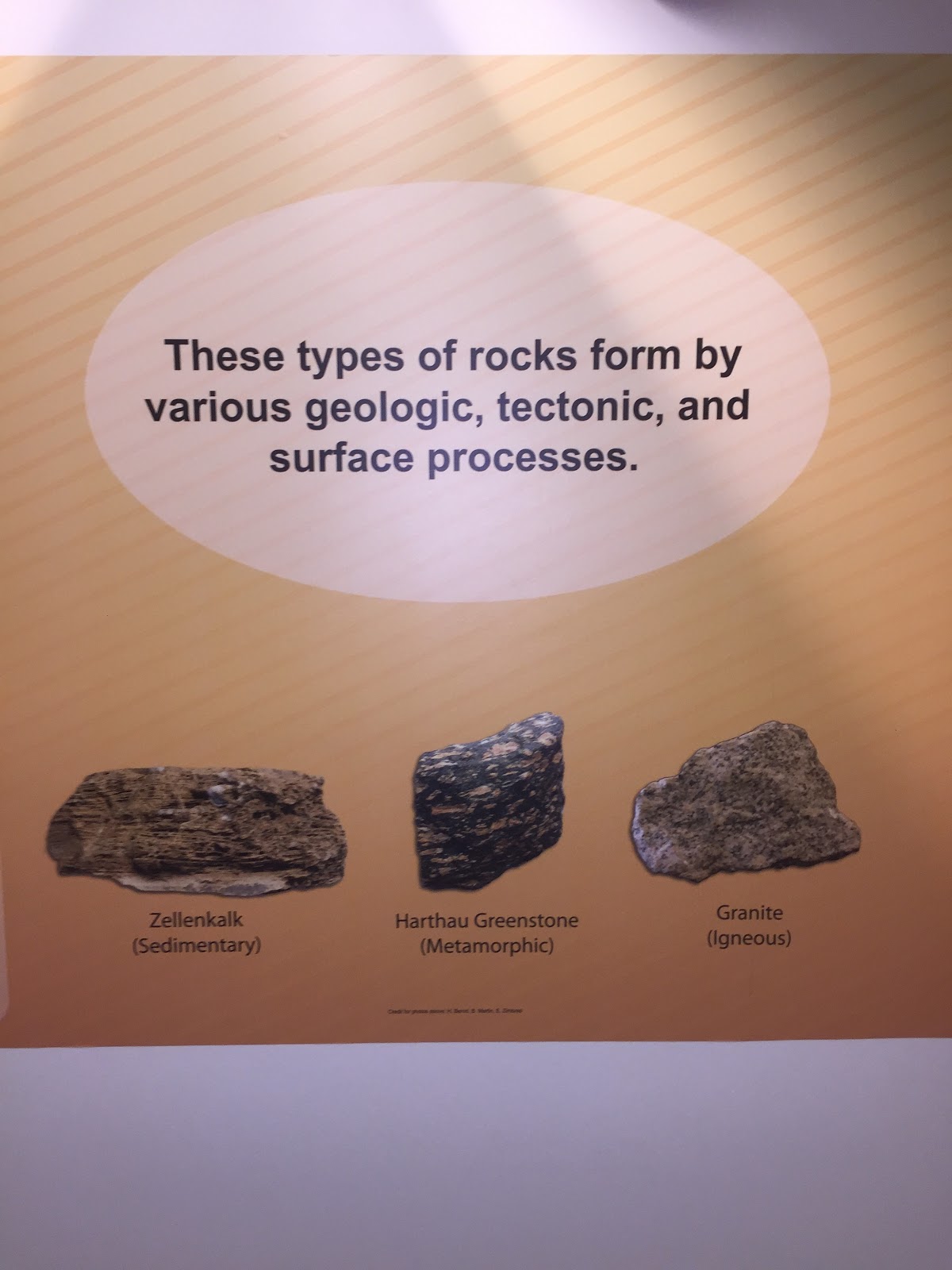
This wrapping shows not only what the different rock types look like (sedimentary, metamorphic, and igneous, respectively), but also gives a brief explanation as to how the rocks are made.
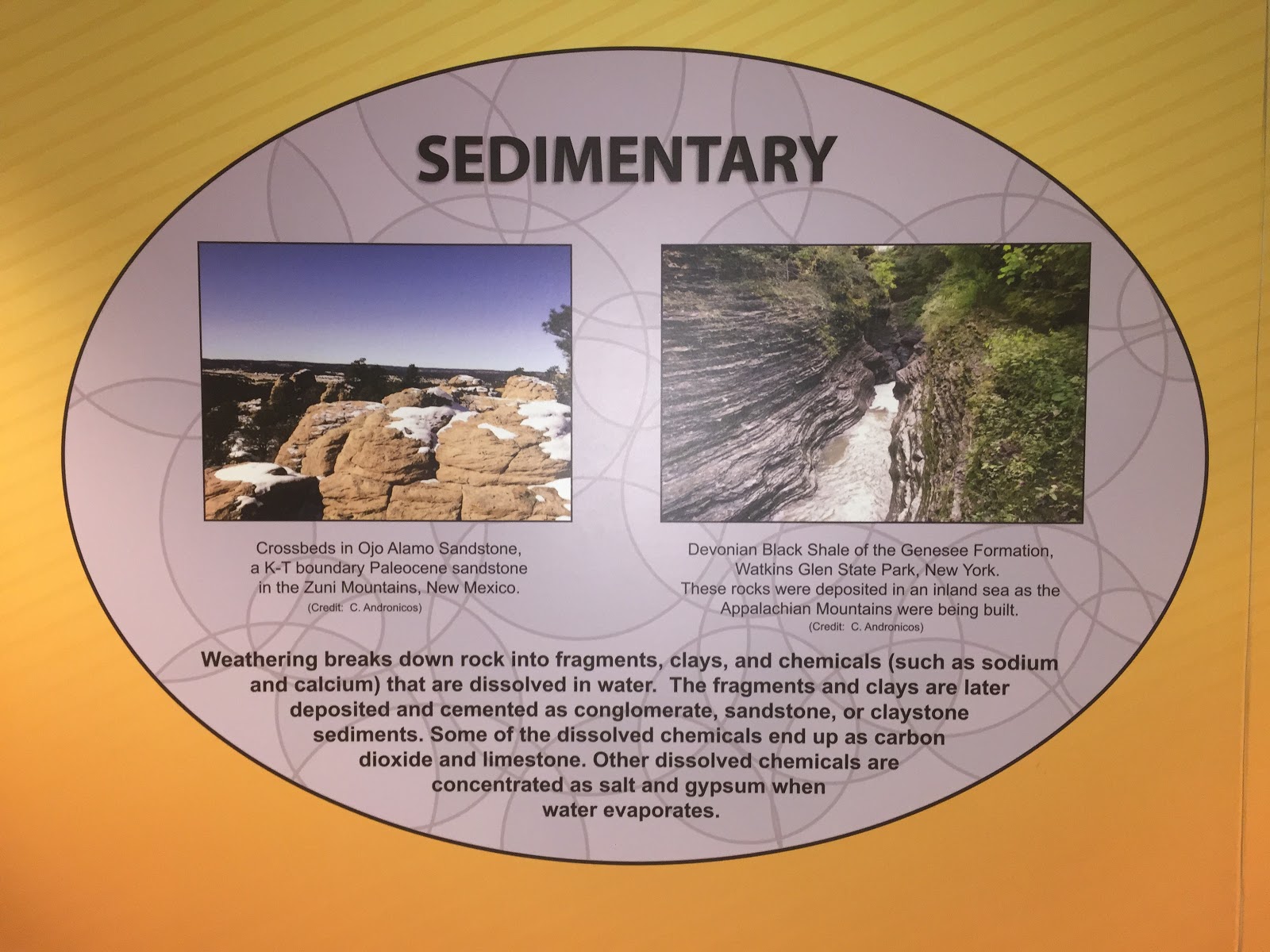
Weathered-down rocks will break down into fragments, clays, and chemicals that are dissolved in water. A part of these dissolved chemicals will end up as carbon dioxide, limestone, salt, or gypsum. The fragments and clays will become conglomerate, claystone, or sandstone.
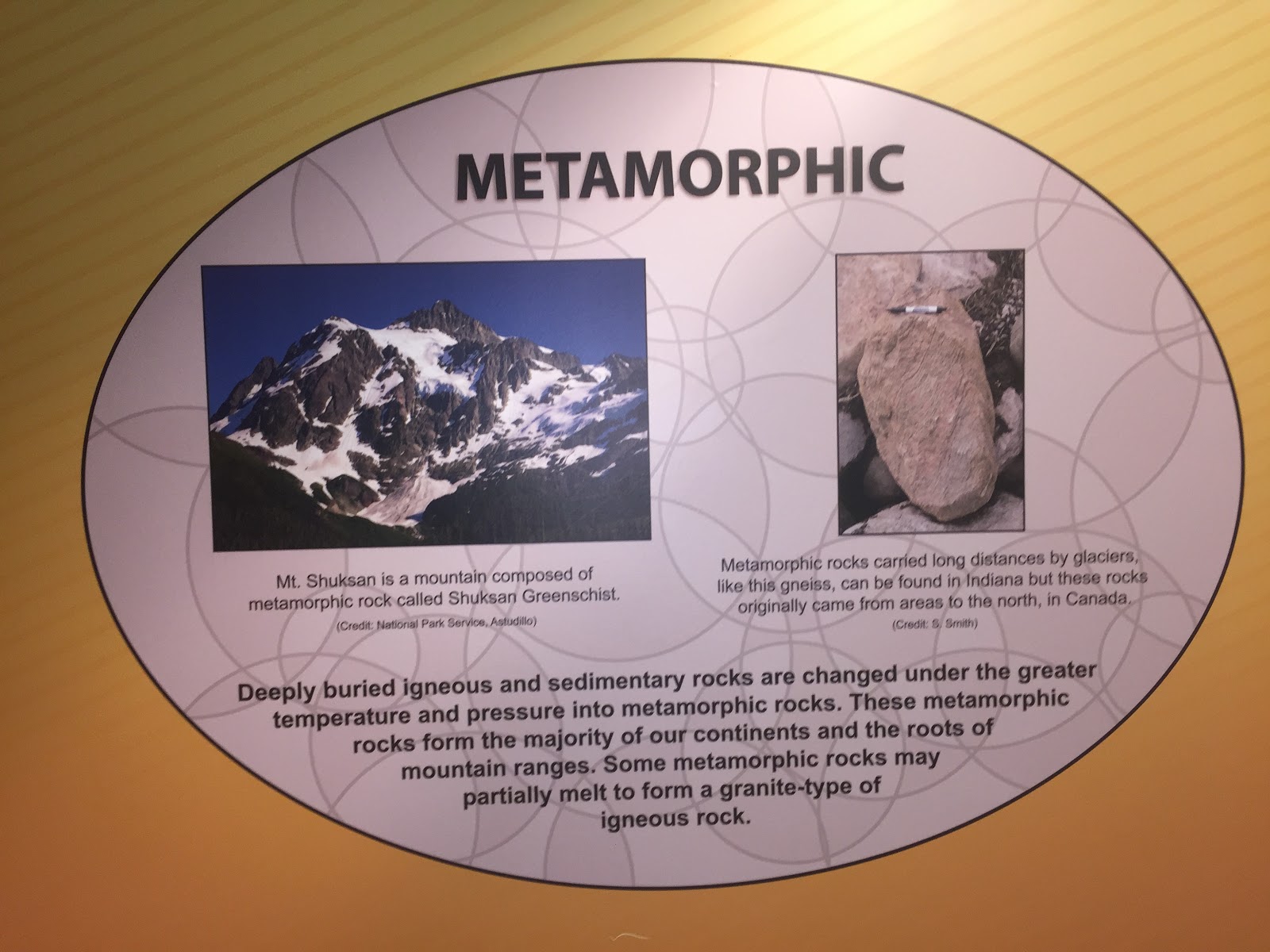
Forming the majority of the continents, metamorphic rocks are created when deeply buried sedimentary and igneous rocks are applied under great temperature and pressure.
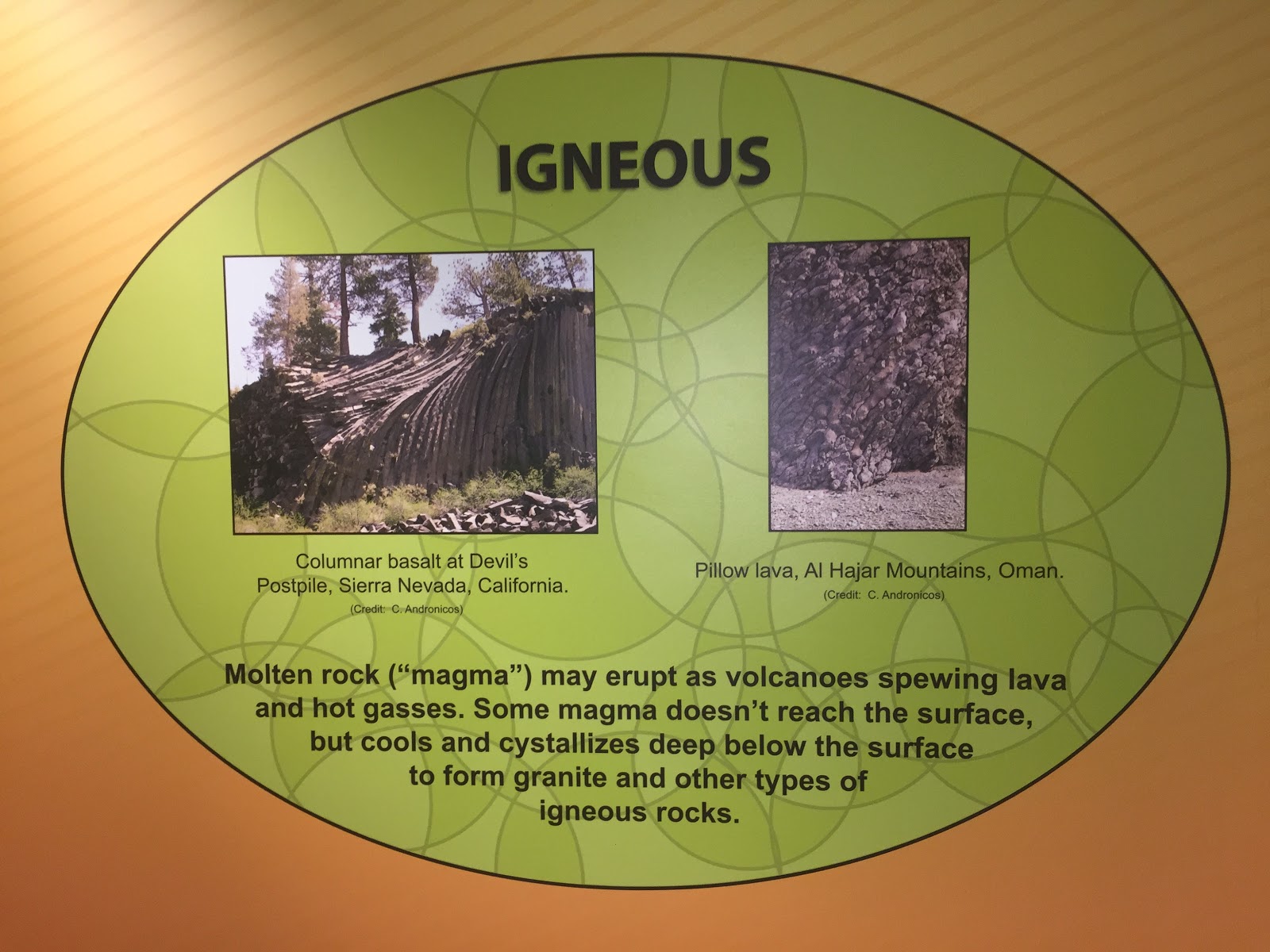
Igneous rocks can either stay below the surface and become granite and other types of igneous rocks, or it can erupt as magma from volcanoes.
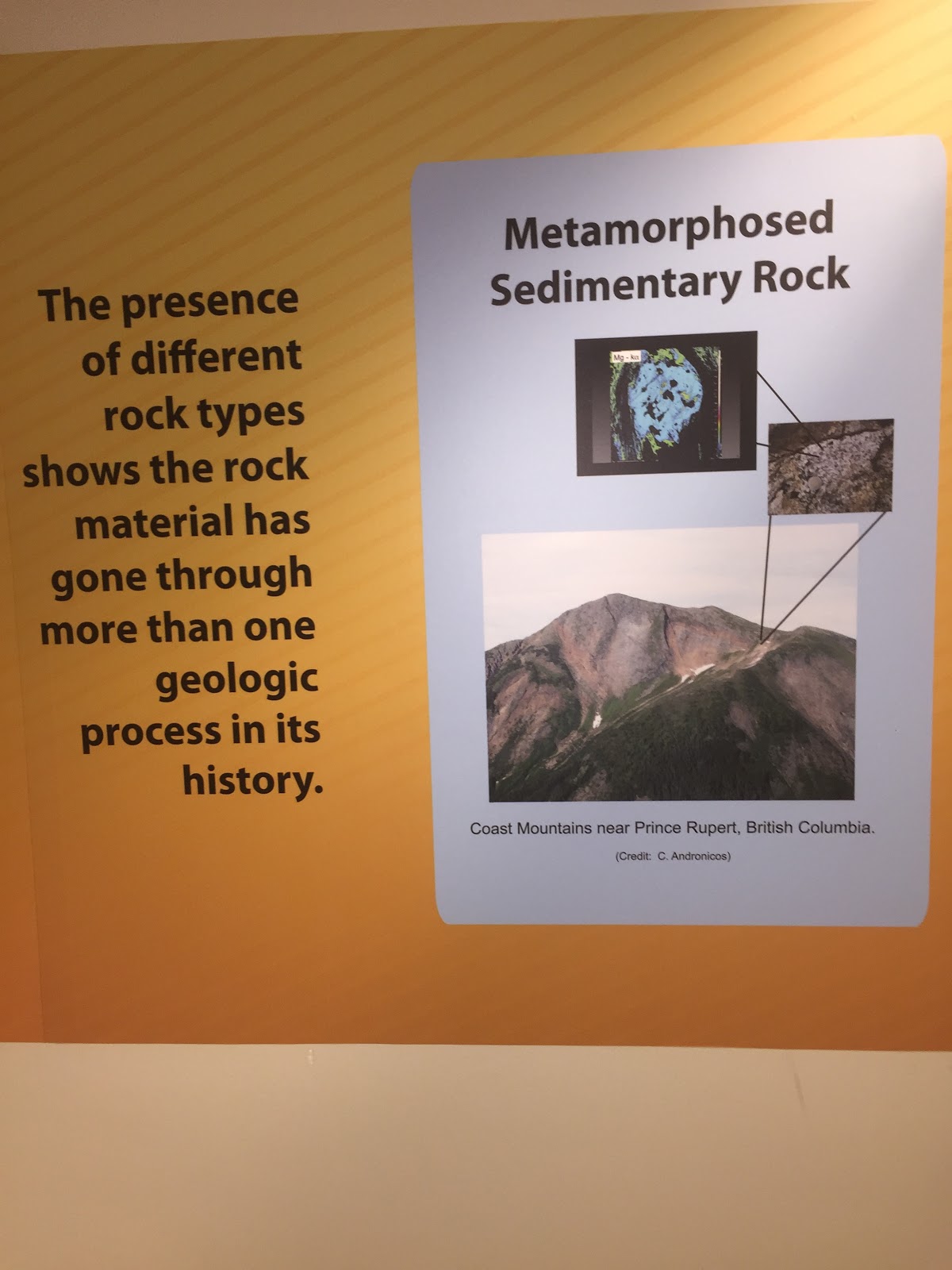
One can tell that an area has gone through more than one geologic process if there are different rock types there.
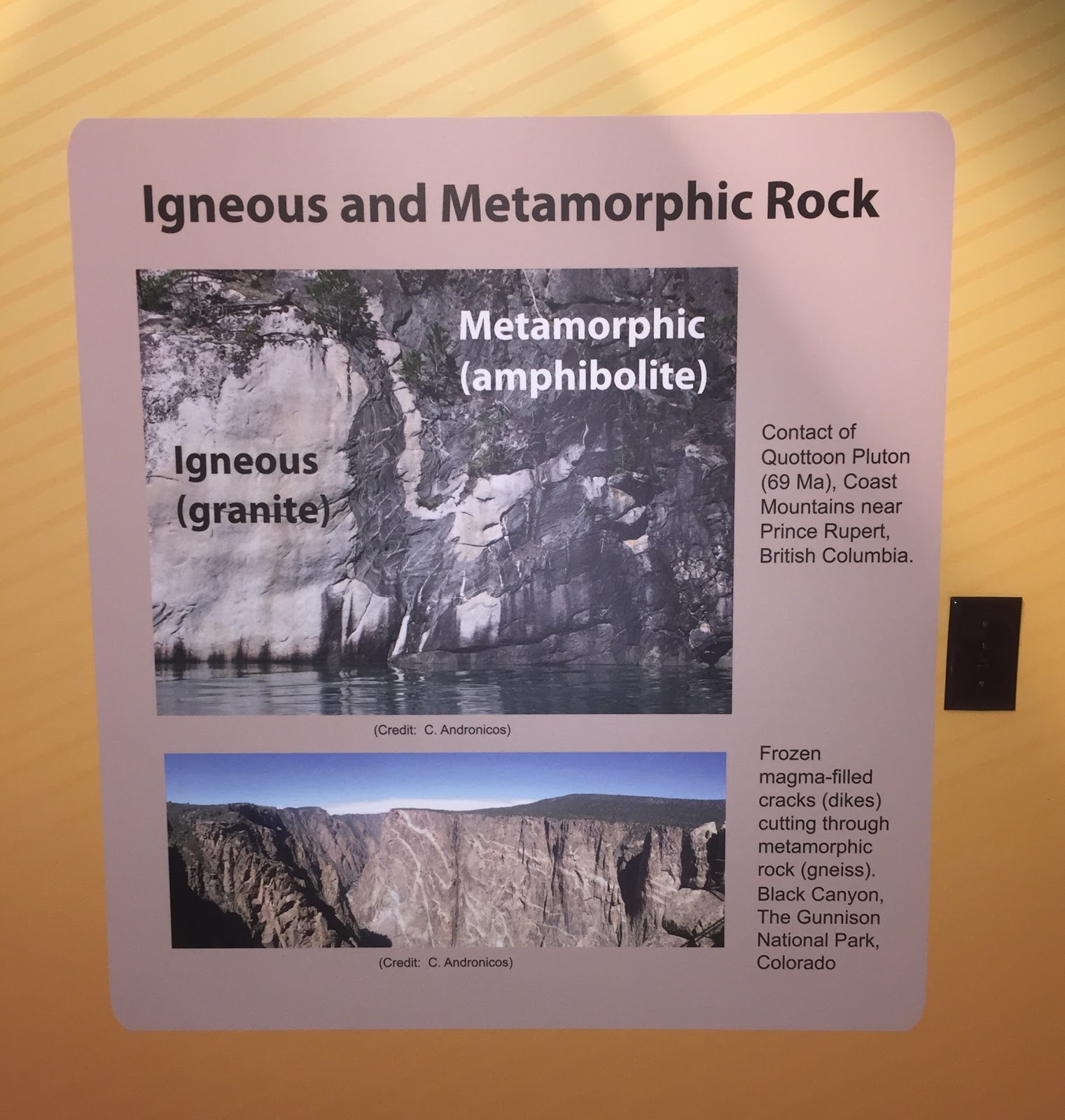
This shows two places in which Igneous and Metamorphic rocks coexist- Colorado and British Columbia.
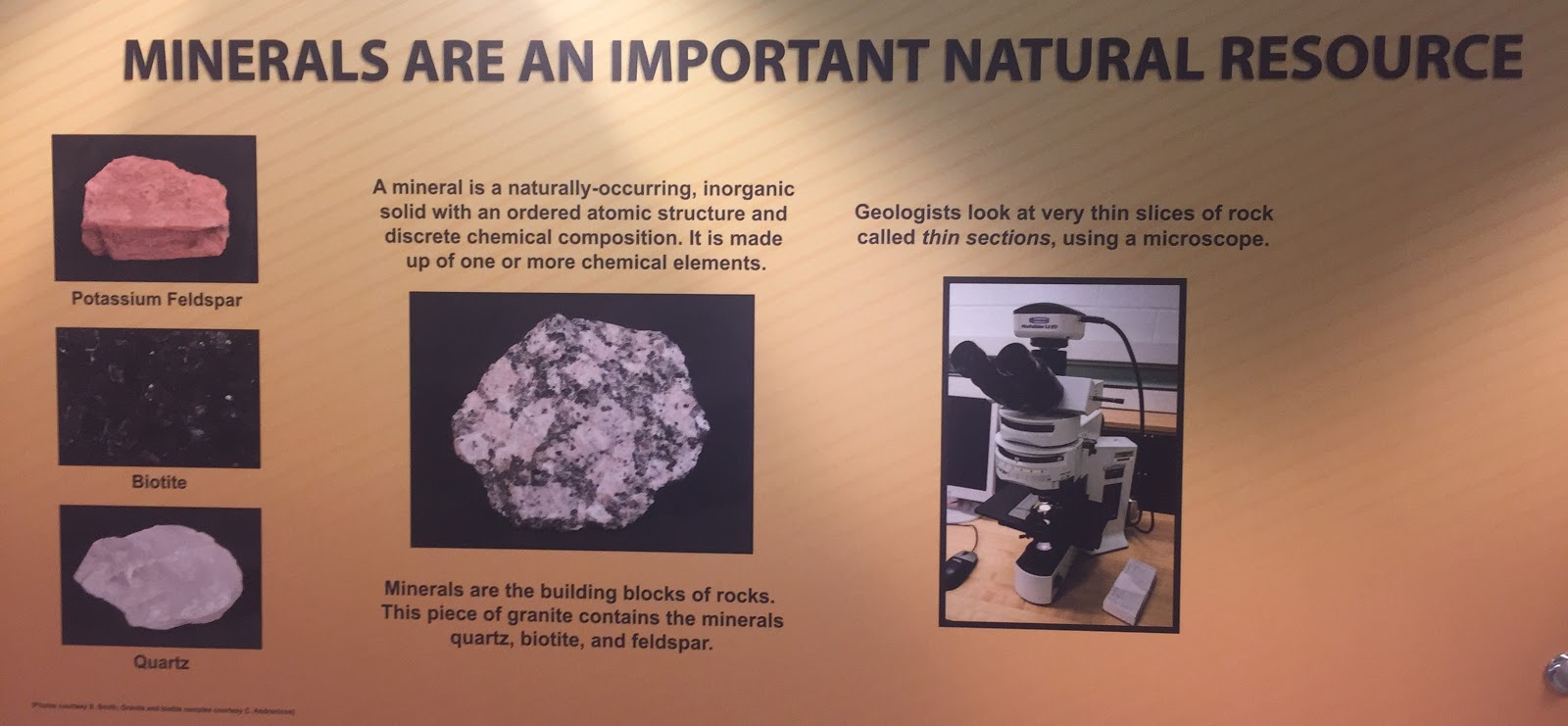
Minerals are considered the building blocks of rocks. But what is a mineral? They are defined as a “naturally-occuring, inorganic solid with an ordered atomic structure and discrete chemical composition, and is made up of one or more chemical elements”.